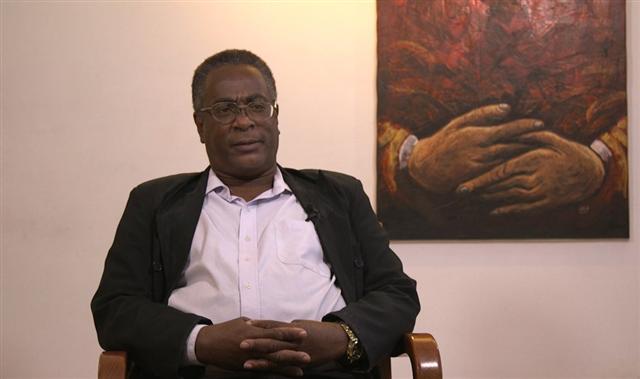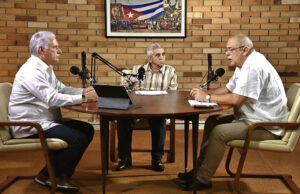Listening to researcher Rolando Rensoli is to understand why Cubanness goes beyond the primary and strict sense of being born in Cuba and to understand the parallelism of culture with ajiaco established by the wise Fernando Ortiz.
The issue comes up during the month of October, a period that marks the peak of celebrations for the national culture and a date given to exalt, recall the reasons for being Cuban by birth, to feel it in the blood, soul and spirit, and «show it in feelings, ideas and attitudes».
According to the scholar, «there is no date that summarizes Cuban Culture as well as October 20 because it was the occasion when the people of the city of Bayamo intoned the lyrics of the National Anthem, La Bayamesa, sung ‘in the most beautiful and solemn hour of the Homeland’ in the words of José Martí».
So the great debate, led by Fidel Castro 40 years ago with the presence of some representatives of the Cuban intelligentsia such as Armando Hart and Abel Prieto, resulted in the same conclusion: it cannot be another day of National Culture. October 20 evokes the clamor of struggle, the taste of victory and the independence spirit of the people.
According to Rensoli, that song of combat and pride synthesizes Cuban culture and that city named Cradle of Nationality, which became the first capital of the Revolution, is the evidence of the synthesis that shapes the identity forged over the centuries from Cape San Antonio to Punta de Quemados (a little further east than Punta de Maisí).
That identity, explained the scholar, is also manifested from our original Native American peoples to the Europeans and English, who put their very particular and many nutrients to compose the «ajiaco» of which Fernando Ortiz spoke, evident in the genetic map and the miscegenation of the nation.
According to the investigator, it is not necessary to dig too deep to appreciate the legacy of more than 2,500 ethnic groups if they are divided into subgroups that joined the three present on the island, the 20 imported by the Spanish and those slaves brought from the rest of the Caribbean before the abolition of the Encomiendas; in addition to the Hispanic, French, Arabs, Asians and Jews.
DIVERSE ORIGINS, ONE PEOPLE
That variety described by Rensoli, present in the hammock, the culinary, the rustic vernacular dwellings in the fields and many other expressions, was the same that Ortiz referred to when he spoke of ajiaco and not, for example, of a mixed salad.
Although at first laughable due to the use of the word, the investigator argued the appropriateness of the term chosen with full intention because it refers to the systematic mixing and cooking of all those ingredients placed in an open casserole and simmered to obtain a substantial broth and not to the simple placement of the elements without achieving their integration.
The vice president of the Aponte Commission of the Union of Writers and Artists of Cuba, talked about the Hispanic culture present in dance, music, literature and various artistic manifestations, and quoted researcher Miguel Barnet to allude to the current roots of Sub-Saharan Africa that made him consider the soul of Cuba indisputably African.
Ortiz, ethnologist and anthropologist, baptized as the Third Discoverer of Cuba, went in depth into that aspect and highlighted the cultural influence noticed in food, vocabulary, verbiage (…) and that social reaction that is the «choteo», but above all in three manifestations of Cubanness; art, religion and the tone of collective emotionality.
But such strength did not have the deserved recognition, at least for a while. Rensoli assured that, in spite of their strong presence after the conquest and their forced emigration, their contributions were made invisible for a long time due to racist issues.
Today they are being confronted by the National Program against Racism and Racial Discrimination, the result of political will since the revolutionary triumph.
«We are not a multiethnic country, but of diverse ethnic origins constituted in a single people and ethnic nation with its particular habits, customs, art, popular religiosity and traditions,» he said.
To support such argument, he evoked the figure of the Father of the Homeland, Carlos Manuel de Céspedes: white man, anti-slavery, Creole, who called his slaves citizens and urged them to fight; and named the Mother of the Homeland, Mariana Grajales: brown, descendant of those African roots.
The professor pointed out the presence of other martyrs such as the black Creole José Antonio Aponte, precursor of the wars for the independence of Cuba and the white Creole Félix Varela, the first one who taught us to think; he also contrasted Antonio Maceo and José Martí.
Today we endorse with our history and culture that ajiaco that on the one hand has the danzón of Matanzas, the Tumba Francesa and the Primada de Cuba of Guantánamo, the son and trova of Santiago de Cuba, the tonada of Pinar del Río and Sancti Spíritus, and so many other artistic and cultural expressions, authentic of each of the provinces that make up this island, he said.
Cuban culture was born with the components of all the ethnic groups and nationalities of the ajiaco that we are. That is why we must think of it from diversity, as that well-seasoned broth that composes us from a cold and cheers up our soul.




